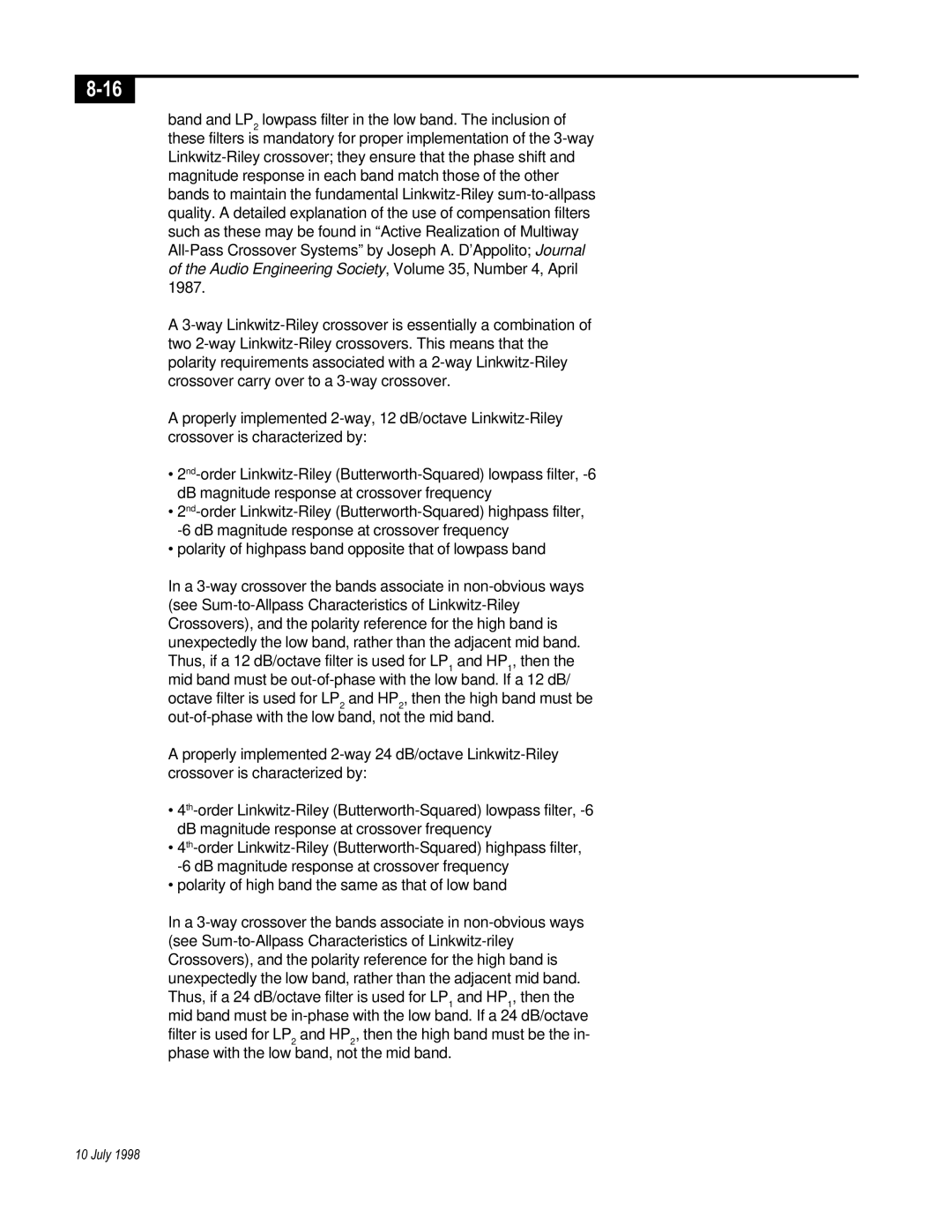band and LP2 lowpass filter in the low band. The inclusion of these filters is mandatory for proper implementation of the 3-way Linkwitz-Riley crossover; they ensure that the phase shift and magnitude response in each band match those of the other bands to maintain the fundamental Linkwitz-Riley sum-to-allpass quality. A detailed explanation of the use of compensation filters such as these may be found in “Active Realization of Multiway All-Pass Crossover Systems” by Joseph A. D’Appolito; Journal of the Audio Engineering Society, Volume 35, Number 4, April 1987.
A 3-way Linkwitz-Riley crossover is essentially a combination of two 2-way Linkwitz-Riley crossovers. This means that the polarity requirements associated with a 2-way Linkwitz-Riley crossover carry over to a 3-way crossover.
A properly implemented 2-way, 12 dB/octave Linkwitz-Riley crossover is characterized by:
•2nd-order Linkwitz-Riley (Butterworth-Squared) lowpass filter, -6 dB magnitude response at crossover frequency
•2nd-order Linkwitz-Riley (Butterworth-Squared) highpass filter, -6 dB magnitude response at crossover frequency
•polarity of highpass band opposite that of lowpass band
In a 3-way crossover the bands associate in non-obvious ways (see Sum-to-Allpass Characteristics of Linkwitz-Riley Crossovers), and the polarity reference for the high band is unexpectedly the low band, rather than the adjacent mid band. Thus, if a 12 dB/octave filter is used for LP1 and HP1, then the mid band must be out-of-phase with the low band. If a 12 dB/ octave filter is used for LP2 and HP2, then the high band must be out-of-phase with the low band, not the mid band.
A properly implemented 2-way 24 dB/octave Linkwitz-Riley crossover is characterized by:
•4th-order Linkwitz-Riley (Butterworth-Squared) lowpass filter, -6 dB magnitude response at crossover frequency
•4th-order Linkwitz-Riley (Butterworth-Squared) highpass filter, -6 dB magnitude response at crossover frequency
•polarity of high band the same as that of low band
In a 3-way crossover the bands associate in non-obvious ways (see Sum-to-Allpass Characteristics of Linkwitz-riley Crossovers), and the polarity reference for the high band is unexpectedly the low band, rather than the adjacent mid band. Thus, if a 24 dB/octave filter is used for LP1 and HP1, then the mid band must be in-phase with the low band. If a 24 dB/octave filter is used for LP2 and HP2, then the high band must be the in- phase with the low band, not the mid band.
